Related Research Articles

Giovanni di Pietro di Bernardone, better known as Saint Francis of Assisi, was a mystic Italian Catholic friar, founder of the Franciscans, and one of the most venerated figures in Christianity. He was inspired to lead a life of poverty and itinerant preaching. Pope Gregory IX canonized him on 16 July 1228. He is usually depicted in a robe with a rope as belt.

The Franciscans are a group of related mendicant Christian religious orders within the Catholic Church. Founded in 1209 by Italian Catholic friar Francis of Assisi, these orders include three independent orders for men, orders for women religious such as the Order of Saint Clare, and the Third Order of Saint Francis open to male and female members. They adhere to the teachings and spiritual disciplines of the founder and of his main associates and followers, such as Clare of Assisi, Anthony of Padua, and Elizabeth of Hungary. Several smaller Protestant Franciscan orders exist as well, notably in the Anglican and Lutheran traditions.

A friar is a member of one of the mendicant orders founded in the twelfth or thirteenth century; the term distinguishes the mendicants' itinerant apostolic character, exercised broadly under the jurisdiction of a superior general, from the older monastic orders' allegiance to a single monastery formalized by their vow of stability. A friar may be in holy orders or a brother. The most significant orders of friars are the Dominicans, Franciscans, Augustinians, and Carmelites.

The term third order signifies, in general, lay members of Christian religious orders, who do not necessarily live in a religious community such as a monastery or a nunnery, and yet can claim to wear the religious habit and participate in the good works of a great order. Roman Catholicism, Lutheranism and Anglicanism all recognize third orders.
The Christian movement known as the Penitents goes back to the 4th century. Those who had committed serious sins confessed their sins to the Bishop or his representative and were assigned a penance that was to be carried out over a period of time. After completing their penance, they were reconciled by the Bishop with a prayer of absolution offered in the midst of the community. Penance assumed many forms, such as pilgrimages to holy sites; constructing, repairing and rebuilding churches; and caring for the poor and sick.
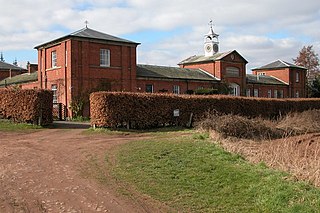
The Society of Saint Francis (SSF) is an international Franciscan religious order within the Anglican Communion. It is the main recognised Anglican Franciscan order, but there are also other Franciscan orders in the Anglican Communion.

Margaret of Cortona was an Italian penitent of the Third Order of Saint Francis. She was born in Laviano, near Perugia, and died in Cortona. She was canonized in 1728.
Blessed Jacoba of Settesoli (Italian: Giacoma de Settesoli; 1190–1273? was a follower of the Italian saint Francis of Assisi. She is also called Jacqueline de Settesoli, or Brother Jacoba, as Francis had named her.
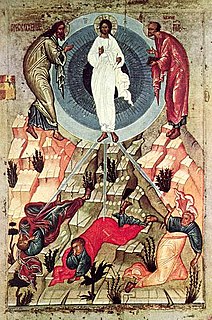
Jacopone da Todi, O.F.M. was an Italian Franciscan friar from Umbria. He wrote several laude in the local vernacular. He was an early pioneer in Italian theatre, being one of the earliest scholars who dramatised Gospel subjects.
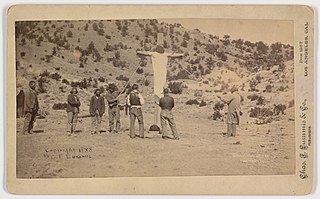
Los Hermanos de la Fraternidad Piadosa de Nuestro Padre Jesús Nazareno, also known as Los Penitentes, Los Hermanos, the Brotherhood of our Father Jesus of Nazareth and the Penitente Brotherhood is a lay confraternity of Spanish-American Catholic men active in Northern and Central New Mexico and southern Colorado. They maintain religious meeting buildings, which are not formal churches, called moradas.
The Third Order of Saint Francis is a third order in the Franciscan tradition of Christianity, founded by the medieval Italian Catholic friar Francis of Assisi.
In the Catholic Church, an association of the Christian faithful or simply association of the faithful is a group of baptized persons, clerics or laity or both together, who, according to the 1983 Code of Canon Law, jointly foster a more perfect life or promote public worship or Christian teaching, or who devote themselves to other works of the apostolate.
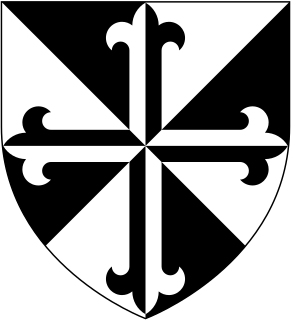
The Third Order of Saint Dominic, also referred to as the Lay Fraternities of Saint Dominic or Lay Dominicans since 1972, is a Roman Catholic third order affiliated with the Dominican Order.
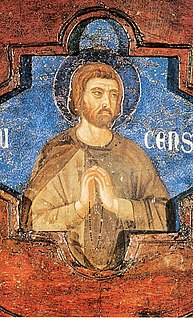
Luchesius Modestini, T.O.S.F. is honored by tradition within the Franciscan Order as being, along with his wife, Buonadonna de' Segni, the first members of the Franciscan Order of Penance, most commonly referred to as the Third Order of St. Francis. His cultus was approved by the Holy See and he is honored as a Blessed by members of that Order.

The Secular Franciscan Order is the third branch of the Franciscan Family formed by Catholic men and women who seek to observe the Gospel of Jesus by following the example of Francis of Assisi. Secular Franciscans are not like the other third orders, since they are not under the higher direction of the same institute. Brothers and sisters of the Secular Franciscan Order profess to their own Rule, and Secular Franciscan fraternities can exist without the presence of the first or second Franciscan Orders. The Secular Franciscan Order was the third of the three families founded by Francis of Assisi 800 years ago.

Angelina of Marsciano, T.O.R. was an Italian Religious Sister and foundress, and is a beata of the Roman Catholic Church. She founded a congregation of Religious Sisters of the Franciscan Third Order Regular, known today as the Franciscan Sisters of Blessed Angelina. She is generally credited with the founding of the Third Order Regular for women, as her religious congregation marked the establishment of the first Franciscan community of women living under the Rule of the Third Order Regular authorized by Pope Nicholas V.

Franciscan spirituality in Protestantism refers to spirituality in Protestantism inspired by the Catholic friar Saint Francis of Assisi. Emerging since the 19th century, there are several Protestant adherent and groups, sometimes organised as religious orders, which strive to adhere to the teachings and spiritual disciplines of Saint Francis of Assisi.

Confraternities of penitents are Christian religious congregations, with statutes prescribing various penitential works; they are especially popular in the Catholic Church. Members of the confraternities of penitents practice mortification of the flesh through fasting, the use of the discipline, the wearing of a hair shirt, among other instruments of penance, etc.

A capirote is a Catholic pointed hat of conical form that is used in Spain and Hispanic countries by members of a confraternity of penitents. It is part of the uniform of such brotherhoods including the Nazarenos and Fariseos during Easter observances and reenactments in some areas during Holy Week in Spain and its former colonies, though similar hoods are common in other Christian countries such as Italy. Capirote are worn by penitents so that attention is not drawn towards themselves as they repent, but instead to God.
When referring to Roman Catholic religious orders, the term Second Order refers to those Orders of cloistered nuns which are a part of the mendicant Orders that developed in the Middle Ages.